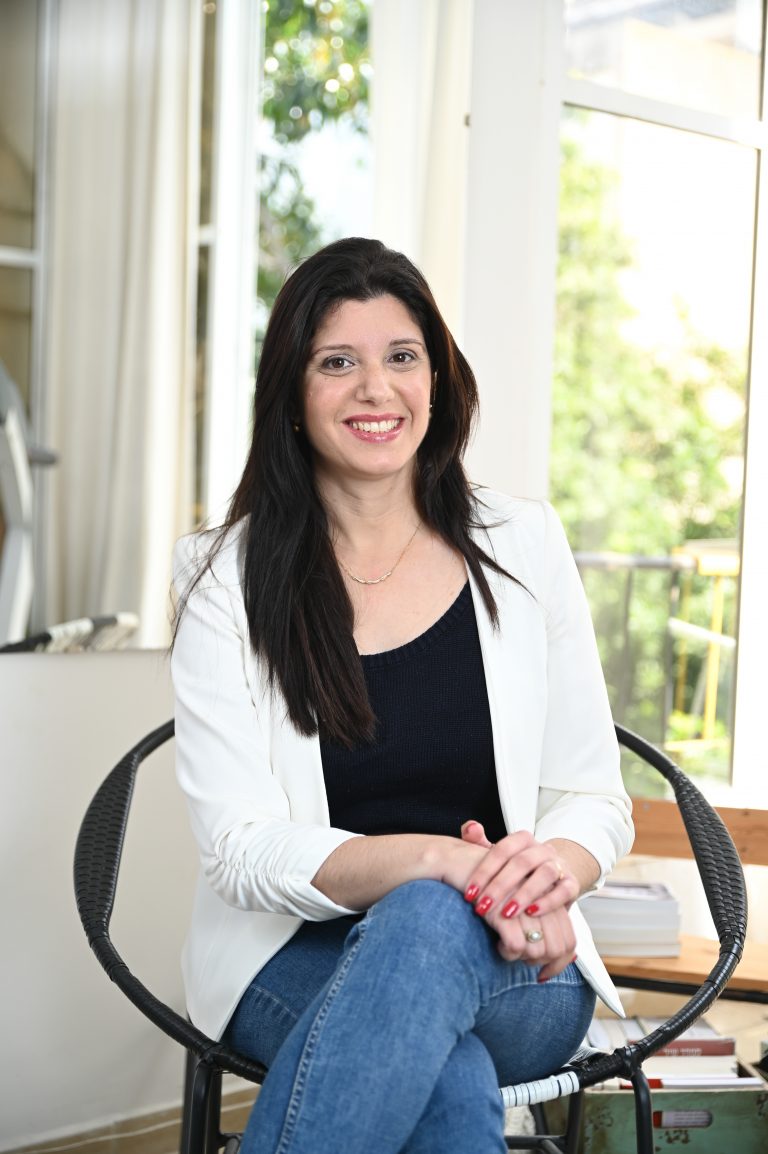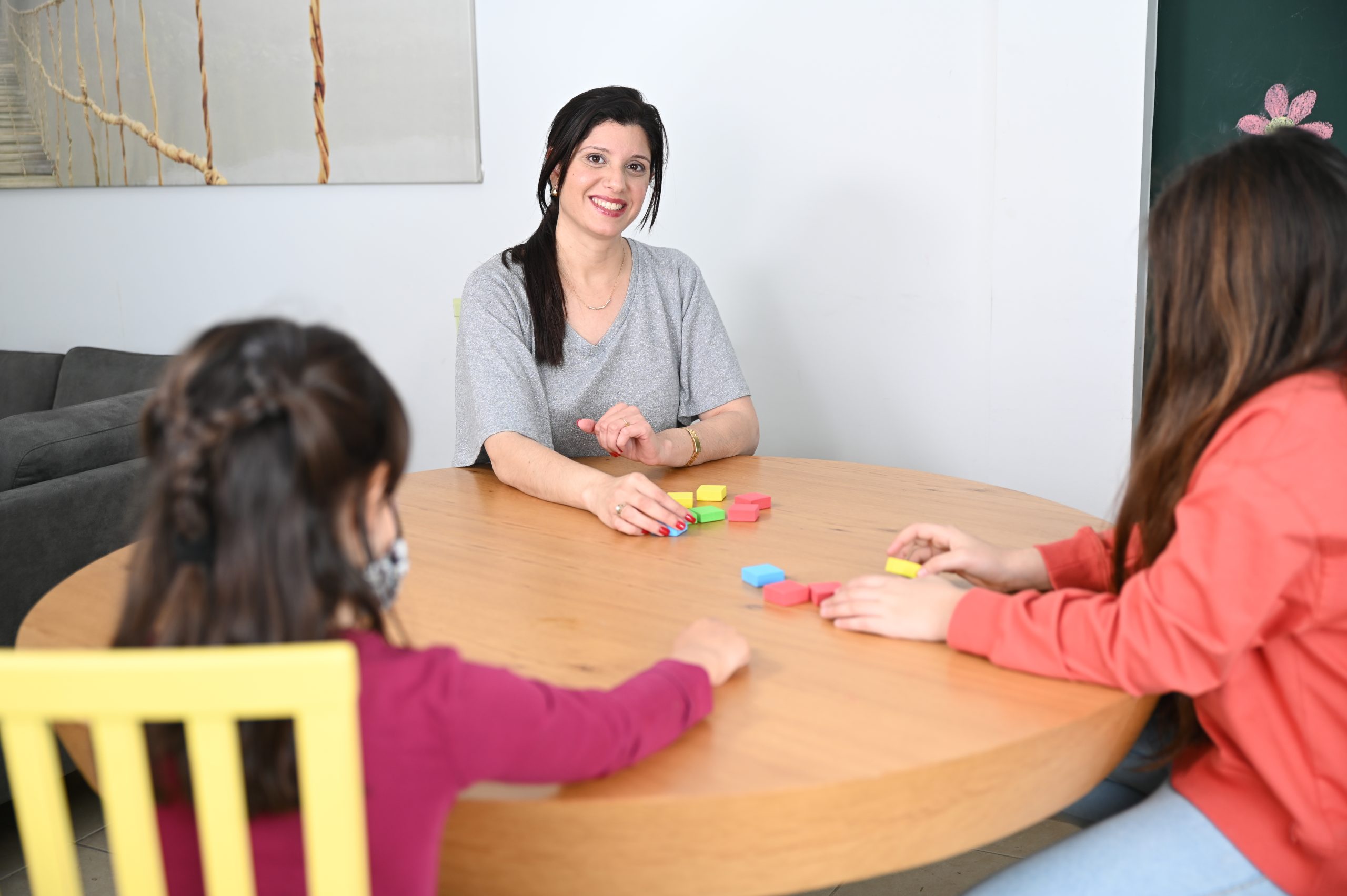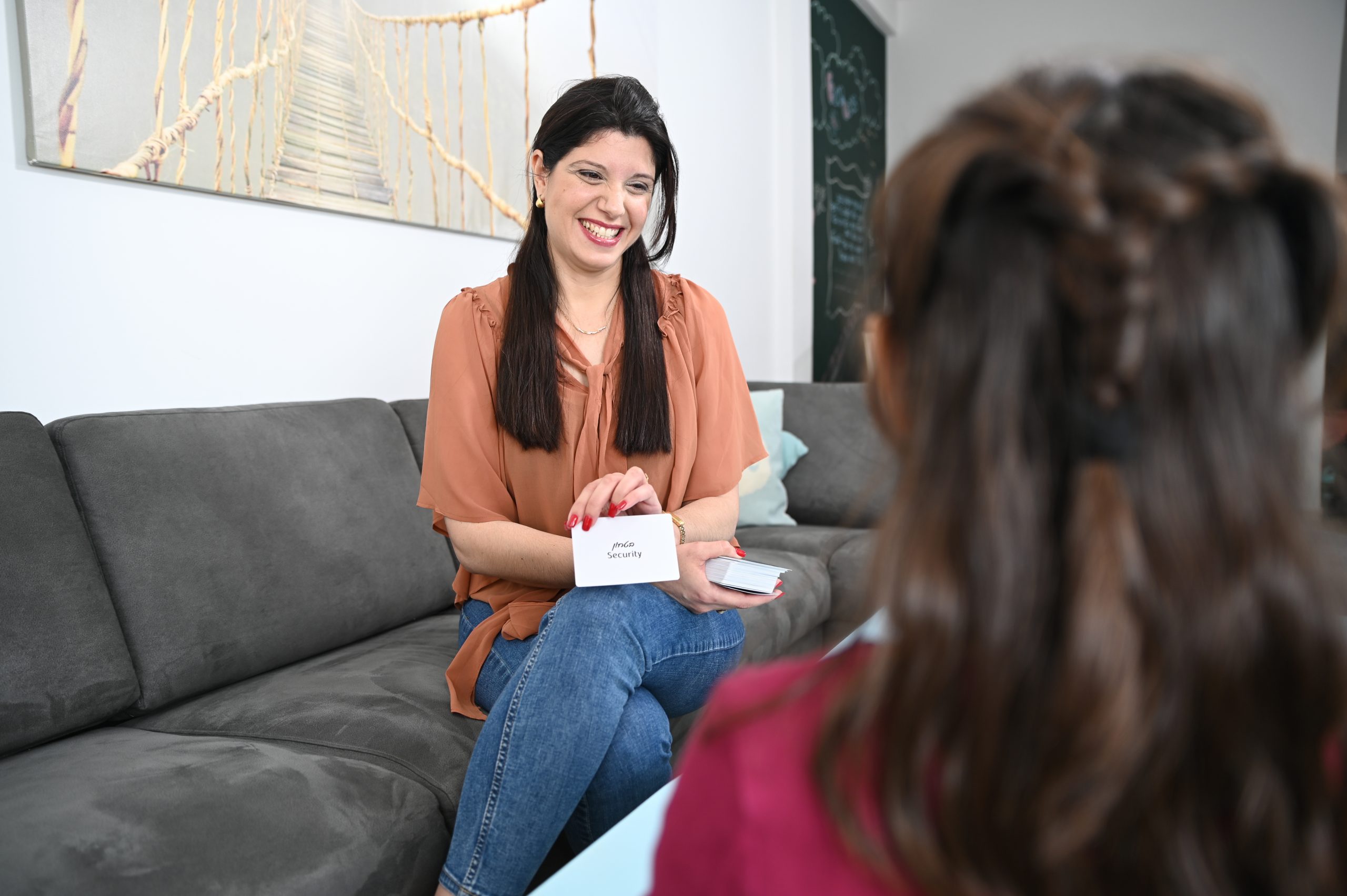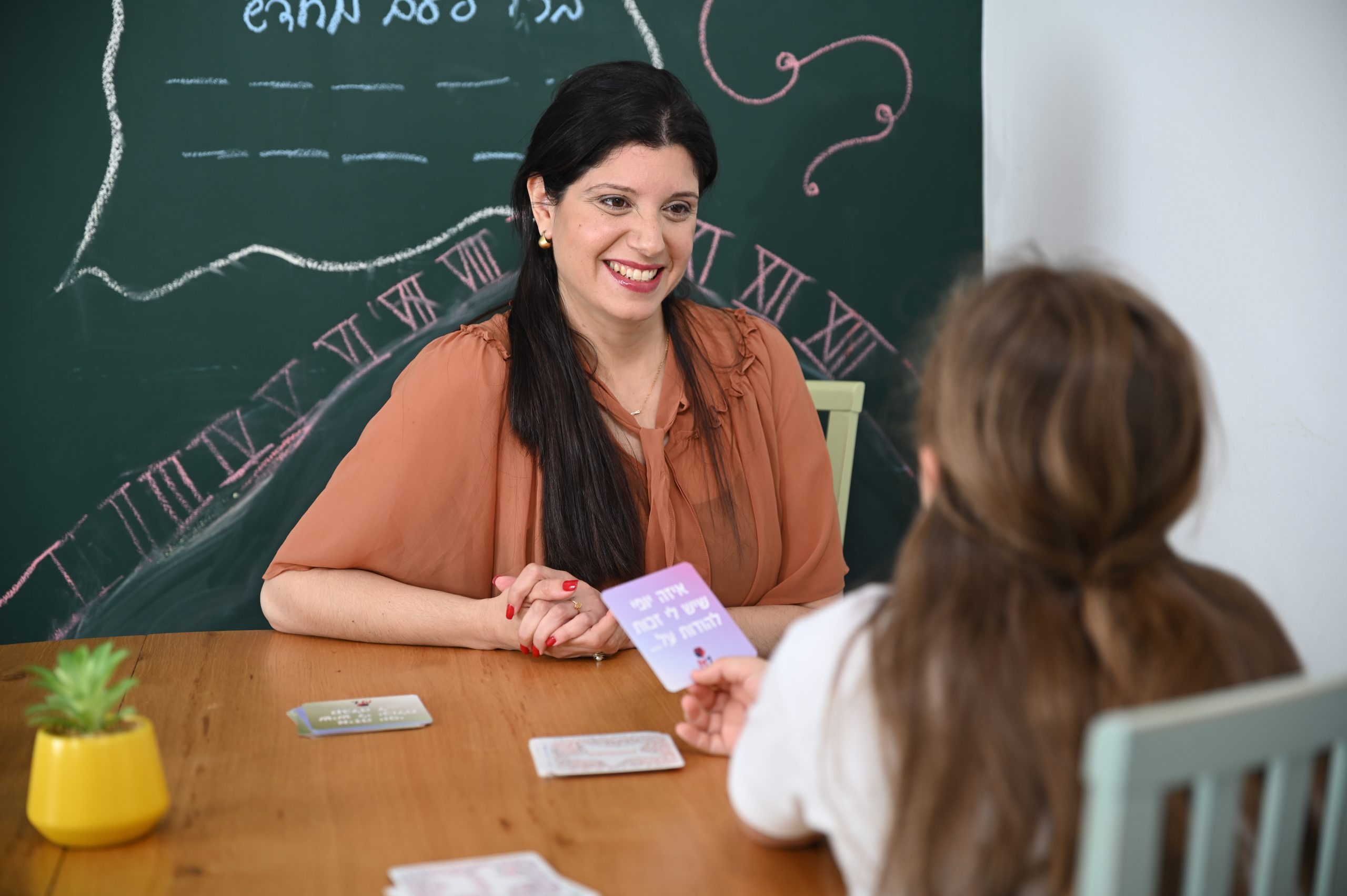My study groups operate with an additional teacher, so they combine personal attention but also the advantage of the group setting. The joint work, as in all my work, also includes emotional aspects of empowerment, increasing self-confidence and an integrated pedagogical emotional approach. This work is a key to success for many children and adolescents. There are areas in which this work reveals many advantages - mainly in the areas of reading, optimal writing, acquisition of English vocabulary and grammar. There are certain learning strategies that are easier to implement in a group, which allows children to momentarily become teachers for their peers. The corrections, the mutual help, the division, and combination of the tasks into a puzzle, all this together with the learning strategies I implement, create impressive successes.
You see students leaving here with higher grades, which is the marginal part, the more important part, is children and teens who see themselves and perceive themselves and experience themselves as very intelligent, and rightly so! You are welcome to contact me by email or phone and hear about existing study groups.
I have witnessed so many miracles during my 20 years of work. At least that’s how the parents of the children and students define it. In practice, I know that the successes of my students are due to several main factors. Firstly, I was there, I suffered in elementary school, a little less in high school, and that’s only because in high school I just ran away from classes. I always compare my work to organizing my room. Learning strategies help us make order in the mess that occurs in the child’s mind. Since I am so familiar with the mess, it has existed in my mind for so many years (you are welcome to read about it on the personal story page under the about tab), it is easier for me to understand how to “sort it out” with the children in mind. But this is not enough. There is also the emotional factor. I truly believe that learning is a physical action, a system of neurons and nerve cells in the brain that we must learn to manipulate. Learning is greatly influenced by motivation. Motivation has many components, and a thorough understanding of its components, including the theory of motivation and the mental tools that motivate us to action, is one of the factors (in my estimation only) for the success of my students. It often happens that students arrive discouraged, without faith and above all because their parents convinced them to come. They are not really interested in succeeding. The saying “What will you do in high school?” or “What would happen without studies?” does not measure success. In my opinion, success in life is much more than pedagogical success. These sayings do not help, the 8-year-old boy – he does not see the far future. He is fixated on the next birthday party which for him is his entire world. These intimidating sayings are not the solution. Expanding on the emotional issue, there is a variety of emotional needs that must be answered – if the child’s soul is important to us and so is his success, along with technical pedagogical help, listening, professional help, cooperation, and faith, there is also the next very simple element, which to me is the most important: understanding. Show them that we understand them.For example, when my mother tells me “I don’t understand how often you can tell him to do his homework and he doesn’t do it” I really understand, it’s a nightmare if you don’t have the right tools for learning. And a boy who tells me “I feel that I will never know”, I believe him and understand him. I know that right now he feels a physical turmoil in his brain (physically!) that gets him out of control.True understanding cannot be faked. Certainly not with children. And this is a necessary element in the teacher-student relationship. In addition, there is the variety component.
Variety in learning methods, if they are adapted and correct for the child, is critical to success.
It’s not just a matter of variety for fun. But diversity for the sake of challenging the brain, a challenge that the brain needs to succeed. There are studies that show that children and youth devote themselves more easily to learning when they are in an intermediate stage between “it’s really easy” and “I don’t understand anything”. The correct identification of the stage in which there is a challenge for the child, but in exactly the right degree, is just as critical. Most importantly, there is nowhere to run. Everything is fine, really everything is fine! The child will know how to read, he will know how to speak English, the child will graduate (for those who still care about it these days). Together we should convey the message to the child that “everything is okay”, there is no need to run to achieve anything. One inch at a time, we will discover the abilities that the student has, what his brain needs to remember and understand, and we will move forward safely, and most importantly – with pleasure! (Note: I recommend reading my article on the difference between understanding and memory found in the blog on this website under the Learning Strategies tab in the main menu). The lessons are held at my home in Givatayim. For students who live in distant cities but are still interested about the strategies I use – I recommend online courses on the subject or personal training for parents with me.
For 20 years now I have seen students whose school life is accompanied by many challenges that could have been avoided if they had started 1st grade after the proper preparation. 12 years of challenges that could have been avoided if only we had looked the truth in the eyes and understood that the education system is demanding, and we must arrive at it prepared. There are so many factors that affect a child’s academic success: behavioral adaptation, orientation in space, renewed management of time and organization, health problems that we are not aware of, sensory regulation, fine and gross motor skills.The times of kindergarten have already passed, the child is required to show responsibility through a wide variety of functional, social, emotional, and behavioral management. A preparatory course for first grade is held in groups of up to five students. In the course, we work on many topics that will be detailed at the bottom of this page. As someone who came out of the education system and recognizes its advantages but also its many disadvantages, it is appropriate that a child reaches the first grade when he already knows how to read. In general, the studies in the education system are in many cases (not always but in many cases) irregular, that is, for a moment it seems that the child controls and understands the material and a second later – literally overnight, the level rises suddenly and to the extreme and the child finds himself frightened. My approach with every student, not only in the 1st grade preparation course, is: We strive for excellence, but with ease! You don’t emphasis the level of the class, you always think about how to progress, as long as it’s done with a reasonable investment, and without unnecessary pressure. I once had a student in the 6th grade who still didn’t know the translation of words like DOG AND HOME – using my learning strategies, I brought him to the point where he answered the matriculation exam with five units of distinction in English. When I suggested that he prepare for the matriculation exam, the parents asked, why? I asked – why not? If it is possible to move forward with fun, and with pleasure, and without effort that adds mental and emotional burden, why not? On the other hand, I do make sure to check the level of the class and make sure that my students are always a few steps ahead of the class. The feeling when you are sitting in class with frustration and a lack of concentration can be very tough. It can create emotional distress, feelings of inferiority, and discipline problems. All of this can be prevented with the understanding that since there is sometimes a rapid and extreme increase in the required learning level, it is important to be responsible and always a few steps ahead, as long as, it is done with pleasure. In preparation for first grade, we learn to read and write, without even feeling that we are learning. Through games, contests, raffles, quizzes. We have fun together, but also learn what my limits are and what the other person’s limits are, develop visual and auditory learning ability, orientation in space, and correcting habits. Pay attention:Since the entry of a child into first grade changes everything that happens at home, there are up to three meetings for the parents as well. Proper adaptation in advance to the changes that will be required in family conduct will help you enjoy the process.
Above average emotional and cognitive intelligence, a developed sense of justice, rare courage, thinking outside the box and rare creativity! That is all the good that excess dopamine brings to our brains, and the excess that is part of the problem of ADHD. But your child will get to enjoy these gifts he received, only if he knows how to overcome the challenges that the disorder brings with it.Personal guidance for children and teens with ADHD19 years that I have been working with students and 19 years that I have seen real miracles happen. It has been 19 years in which I have seen many children arrive with social difficulties and huge educational gaps accompanied by a complete lack of faith in their abilities. But sadder than that, I see parents of children with ADHD who have begun to lose faith in their children’s abilities. I started to offer training programs and personal guidance for children with ADHD – as a teacher and an educator living in the world of adults – And from a very rich experience working with children and youth, I allow myself to say with absolute certainty that there is nothing truer than the sentence “In adults, the consciousness must be changed to success, prosperity and a sense of competence. In children and youth, it must only be created as such from the beginning.”There is the theory – that explains with great precision the challenges faced by children, youth and adults with ADHD, and there are the facts – the great successes we experience in life arrive when we are ready to admit the many challenges that ADHD brings with it and show a willingness to face them. A child with ADHD will not grow and will not enjoy the huge benefits of the disorder, because he did not recognize the challenges and did not adapt the habits and tools to overcome it. The earlier we start the process, the quicker and easier the results will be to achieve.
In other words, in ADHD training program- less emotional forces will be required to create the change, and this is because there will be less mental and internal resistance of the child to the change.
Imagine a tiny monster
Imagine a little monster, sitting inside your brain, stomach, or shoulders. Choose any place you want.
She sits there and tells you stories – here are some examples: No friend wanted to come with you on Saturday for ice cream, your sister got mad at you earlier, the teacher was disappointed with me yesterday… and dozens if not hundreds of small memories that have no meaning for us adults but do have meaning for the children. Then the child arrives and wants a change. And believing in change, he takes the first step. And the monster screams. And she thinks she is the smartest, and she has a reason, she is full of life experience. The inner monster explains to your child with convincing logic why he cannot succeed, is not capable, is not loved. And the longer time has passed without us taking care of this monster, the stronger it will be and the less easily it will surrender. But it’s just a monster and the events that happened are just an interpretation, and the interpretation created an emotional state that created a reaction that created another event that created the same unempowering interpretation again. So how old is she? How old is the monster? Is she six months old? two years? three? Every monster can be defeated with the right tools. Any consciousness can be changed.It is just important to remember – the more we start the process when the monster is still a baby, when it can still be easily eliminated, the higher, faster, easier we can grow. The sooner we start the process of personal training for children with ADHD, the easier it will be to “fight” the previous consciousness that says, “I’m not good enough, I can’t succeed”. There will be fewer walls to break.
So, what do we do, the child and I – the process of learning how to interact with ADHD?
We will get to know the child’s strengths. There are lots of them! – I promise you. In the training program, the child will discover these strengths on his own. He will be surprised to find out how much good there is in him, and how much good there is in his life. The sessions will include CBT games (tools from the world of cognitive behavioral training), conversations, card games, assignments, and creating videos. After a few meetings with me, your child will be “flying on his own”. And this is how a child should walk in the world – when he “flies by himself”. Becoming the best possible version of himself. After that, we will also speak about the challenges, but not before making sure that there is a fertile ground of confidence and strength, an inner backbone that can receive and hear about the challenges and accept them. We will learn and apply the use of many tools to solve everyday challenges and struggles. We will create winning habits for life that will help the child build his future.
At the end of these steps, we will go through some additional processes together
Creating leadership in your children, developing good social skills
Organizing time effectively – getting more done in less time and efficiently
Build positive interpretations of what is happening around us
We will work on restraint and delaying gratification
Taking personal responsibility
Strive for excellence
Organization and order of effective learning (for those that wish, we will also work on learning strategies)
Creating balance and calmness
Setting goals and achieving them


Parental guidance for children with ADHD
The brain of a child, teenager or adult with ADHD is a different brain. As someone diagnosed with extreme ADHD, I can say that this is one of the most important insights. Our brains are different – and require different sensitivity, different attention, different management along with unique interpersonal communication. Parental guidance for children with ADHD is critical to the success of empowering the diagnosed child. You must learn to know the limitations of the problem, the challenges, the struggles, the huge blessings it brings – and know how to direct and strengthen your children.
Parental guidance for children with ADHD
ADHD brings with it many blessings. Rare creativity, great sensitivity to the environment, a developed sense of justice, high dedication to the task (after a focus has already been created) and countless other advantages. But alongside all of this we must remember that ADHD also brings a lot of challenges that without an adequate response and treatment through parental guidance – there will be no expression of the benefits and the high possible growth. The main problem is that many parents and educators consider the problem of attention and concentration only a problem of concentration or hyperactivity. Children, teenagers, and adults with ADHD have very high sensitivity and vulnerability, and hence also tend to have a negative and erroneous interpretation of reality – an interpretation that over the years creates a sense of victimhood and weakness. Some researchers claim that this vulnerability and sensitivity to the environment is sometimes created due to the child’s increased intuition, and increased sense perception. Our great sensitivity causes us to absorb too much of the pain from the environment “into us”. This is an emotional challenge that you as parents – the mainstay of your children’s lives – should be aware of. With my guidance, the parents will learn what drives your children, how their brain works and how to help them behave and grow. The lack of focus and concentration also creates a problem of order and organization in various aspects of life. The lack of organization sometimes creates time delays, which create daily stress, stress which creates an emotional burden, an emotional burden that adds to the vulnerability and sensitivity of the child – a sensitivity and vulnerability that in the first place only exists in the problem itself – even before the organizational problems that “add fuel to the fire”. This great vulnerability creates many misinterpretations, sometimes also problems with authority (parents and teachers), or social problems due to low self-esteem. All of these are not justified because most of these children are significantly smarter than average and according to studies they are seen by society as beloved and appreciated.
As parents - you have an important role in shaping the future of your children. Organized parent training in dealing with ADHD will help you help your children.
- שיפור הביטחון העצמי
- הכרה במסוגלות עצמית
- ניהול וארגון זמן
- דחיית סיפוקים ואיפוק
- פרשנות מעצימה לאירועים
- שיפור בתקשורת, מנהיגות וכישורים חברתיים
- ניהול תהליכי למידה והצלחה פדגוגית


If you want to build a ship..

“If you want to build a ship, don't drum up people to collect wood and don't assign them tasks and work, but rather teach them to long for the endless immensity of the sea“. Antoine de Saint-Exupery
In my eyes, this is the most important work of every educator, to instill in a child the love of life, the desire to prosper, flourish, fulfill and create.
“The bigger the why the easier the how” –
T. Harv Eker






